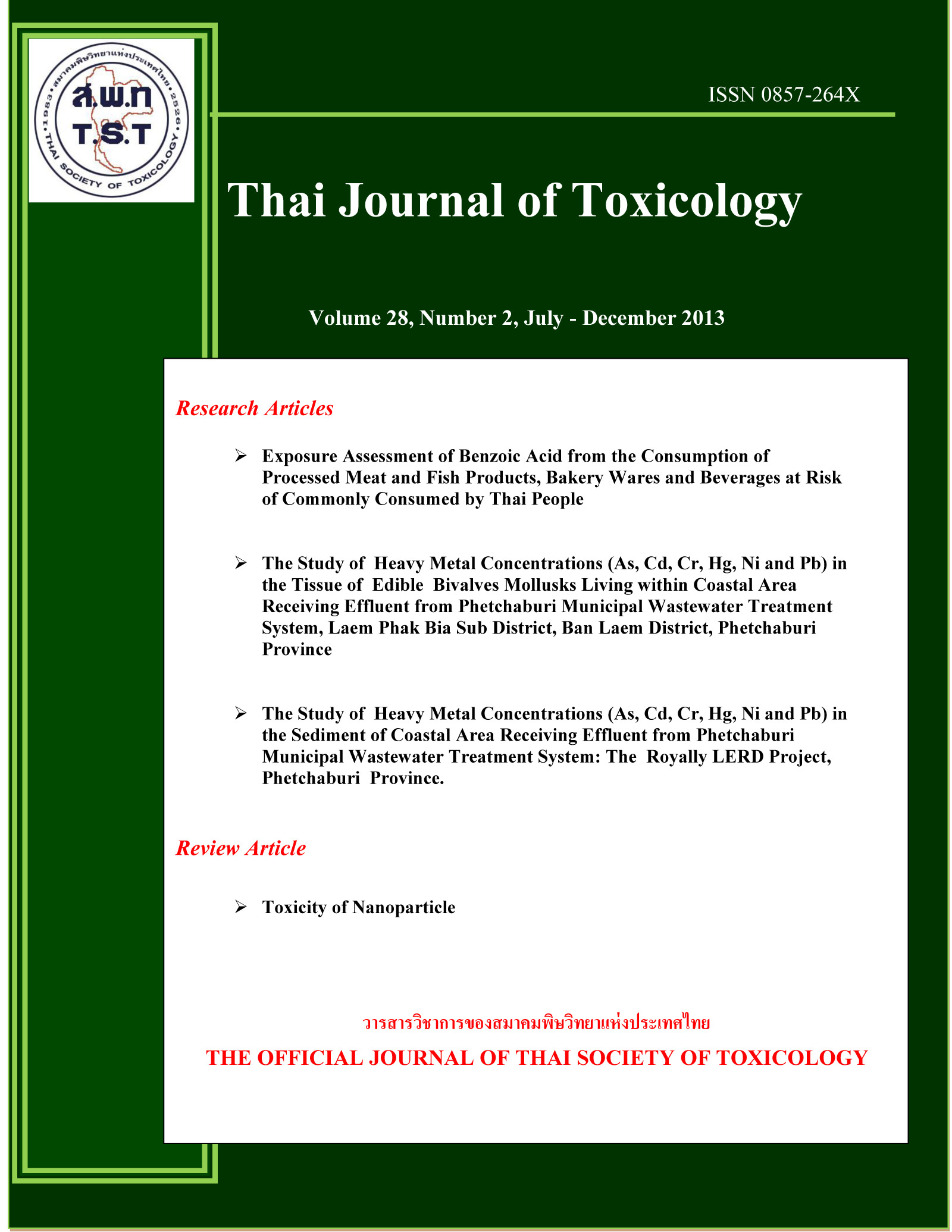The Study of Heavy Metal Concentrations (As, Cd, Cr, Hg, Ni and Pb) in the Tissue of Edible Bivalves Mollusks Living within Coastal Area Receiving Effluent from Phetchaburi Municipal Wastewater Treatment System, Laem Phak Bia Sub District, Ban Laem District, Phetchaburi Province
Main Article Content
Abstract
Heavy metal concentrations (As, Cd, Cr, Hg, Ni and Pb) in the tissue of six species of edible mollusks (ie. Anadara granasa, Katelysia hiantina, Katelysia marmorata, Marcia hiantina, Marcia marmorata, Phaxas attenuatus), in the specific coastal area of Laem Phak Bia Sub District, Ban Laem District, Phetchaburi province were studied. Accumulation of heavy metals may be occurred in mollusks from Phetchaburi municipal wastewater treatment system. This project used simple technology based upon the nature-by-nature purifying process, introduced by the wastewater treatment system within the filtration procedure. The sample collections were monitored and recorded at the lowest sea level in September 2012 (rainy season) and March 2013 (summer season). The highest average concentration of heavy metal was As that found in the mollusk Katelysia marmorata with 0.04037 milligrams/kilograms (As). The lowest average metal concentration was found to be mercury (Hg), with value of 0.00007 milligrams/kilograms (Hg) in the mollusk Marcia hiantina. From this study, six of the bivalves showed heavy metal accumulation within their tissues. However, these metal levels did not exceed the recommended standard levels and may not cause adverse human health effect after consumption.


